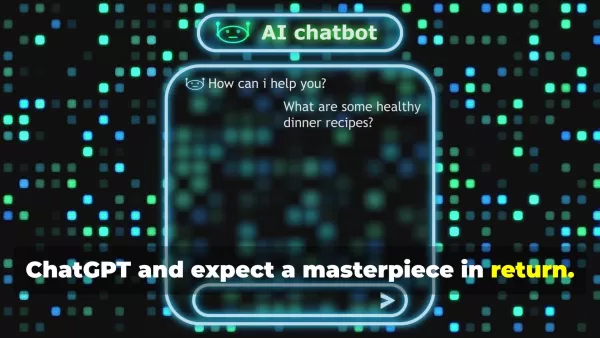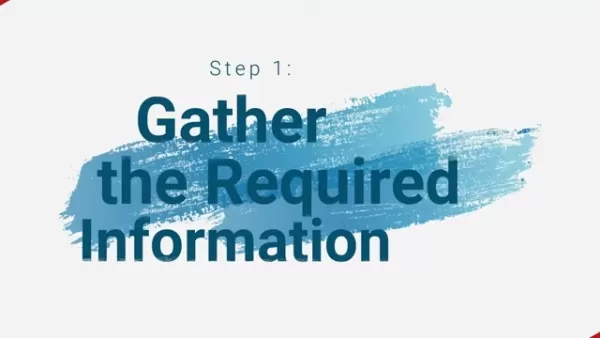Mastering AI Prompts: A Beginner's Guide for 2025
If you're diving into the world of artificial intelligence in 2025, you don't need to be a tech wizard to make the most of it. The key to unlocking AI's full potential lies in mastering the art of crafting effective prompts. This guide is all about helping beginners like you learn the ropes and get the most out of AI through smart prompting techniques and real-world examples. From personalized learning sessions to sparking your creativity, you'll see how AI can transform your daily tasks.
Key Points
- Specificity Matters: Vague prompts lead to vague results. Be precise and to the point.
- Crafting the Perfect Prompt: Tailor your prompts to ensure AI delivers what you need.
- Simplifying Complexity: AI can break down even the toughest topics into simple explanations when prompted correctly.
- Refining for Quality: Fine-tuning your prompts results in more accurate and insightful AI responses.
- Personal Tutoring: With the right instructions, AI can serve as your personal learning companion.
- Brainstorming Partner: AI's versatility makes it an invaluable tool for generating fresh ideas across various fields.
The Fundamentals of AI Prompting
What is AI Prompting?
In the fast-paced world of 2025, AI has become an everyday tool, not just a sci-fi fantasy. But you don't need to be a coding expert to harness its power. Instead, understanding AI Prompting is crucial. It's the art of creating clear and effective prompts that guide AI tools like ChatGPT, Bard, and Midjourney to give you the best possible results.

These AI models rely heavily on the input they receive. A poorly crafted prompt can lead to frustratingly off-target responses. On the other hand, a well-thought-out prompt can unlock AI's full potential, helping you with everything from content creation to solving complex problems. Think of a prompt as a blueprint for AI; the more detailed and precise, the better the outcome. By learning to 'speak AI's language,' you can tailor your prompts to get the results you want.
This article is your starting point to mastering the basics and techniques of crafting prompts that lead to insightful and relevant AI responses. By the end, you'll see how anyone can leverage AI, regardless of their technical background.
The Importance of Specificity in AI Prompts
When you're chatting with AI, specificity is your best friend. The more specific your prompt, the more targeted and useful the AI's response will be. Instead of asking something broad like, "Tell me about history," try something more focused like, "Explain the main causes of the French Revolution in simple terms." This approach helps AI sift through its vast knowledge base and deliver exactly what you need, cutting out the fluff and saving you time.

AI thrives on clear, concise prompts. Avoid ambiguity, use straightforward language, and give enough context for the AI to understand your request. This not only leads to more accurate responses but also makes it easier to integrate those responses into your projects. In 2025, mastering this skill will make your AI interactions smoother and more efficient.
To sum it up, when interacting with AI, aim for:
- Clear Instructions: Be explicit about what you want the AI to do.
- Concise Language: Use simple, easy-to-understand words.
- Targeted Prompts: Keep your goal specific to get better results.
The Role of Context in Guiding AI Responses
Context is the unsung hero of effective AI communication. In 2025, it's more important than ever to provide the right context to ensure AI delivers relevant and useful responses. Just like in human conversations, AI needs a frame of reference to understand your request fully.
Context includes background information, specific instructions, or parameters that help AI tailor its response to your needs. Without it, it's like asking for directions without saying where you are. Here's how you can use context effectively:
- Background Information: If your query relates to a specific topic, providing context helps AI understand your intent better.
- Instructions: Giving AI a clear structure reduces the chances of errors and improves the quality of responses.
By providing detailed context, you can significantly enhance the relevance and accuracy of AI's answers, making your interactions more productive and aligned with your goals.
Unlocking ChatGPT's Potential: Advanced Prompting Techniques
Making AI Think: The Thought Process Prompt
In 2025, AI isn't just about quick answers; it's about engaging in thoughtful processes. To achieve this, use the thought process prompt to make ChatGPT think more deeply before responding.

It's as simple as adding a phrase to your prompt:
Before answering my next question, outline your thought process step by step
This small change can revolutionize your AI interactions, turning it into a partner that thinks alongside you, rather than just providing answers.
Simplifying Complexity: The 10-Year-Old Explanation Prompt
Simplifying complex ideas is a powerful communication tool, and it works wonders with AI too. One effective technique is to ask AI to explain a complex topic as if you were a 10-year-old.

Here's how you do it:
Explain complex topic as if I were a ten-year-old
This approach not only simplifies the language but also helps you grasp the core elements of the topic, making it easier to understand new concepts, break down intricate problems, and identify essential information.
Setting the Tone: Personalizing AI Responses
In 2025, personalization is key, and AI interactions are no exception. You can now customize how AI communicates to match your preferences, making your interactions more engaging and effective.
To personalize AI responses, use this prompt:
From now on, respond in a desired tone of voice with preferred formatting
For example, you might say, "From now on, respond in a witty, casual tone with short bullet points." This customization enhances your experience and makes AI's responses more relevant to your needs.
Step-by-Step Guide to Using the Prompts
Step 1: Accessing an AI Platform
To start your AI prompting journey, you'll need access to a platform that can interpret and execute your prompts. The most popular one is ChatGPT, but there are others:
- Bard: Another popular AI platform that uses prompting.
- MidJourney: Uses visual prompting to generate AI-created images.
- Stable Diffusion: Similar to MidJourney, it uses visual prompting for image generation.
Explore these platforms to get comfortable with how they handle prompts.
Step 2: Crafting Prompts: Tell the AI What You Want
Once you're on the platform, it's time to craft your prompts. Be explicit about what you want AI to do. Here are some tips:
- Clear Instructions: The clearer you are, the better AI will perform.
- Tone Considerations: Set the tone you want AI to use in its responses.
Step 3: Evaluate and Refine
As AI responds, evaluate the output for clarity, detail, and formatting. If the response doesn't meet your expectations, refine your prompt and try again. It might take a few attempts to get the AI to respond exactly as you want.
AI Prompting: Weighing the Benefits and Drawbacks
Pros
- Enhanced Accuracy and Relevance: Specific prompts lead to tailored AI responses.
- Increased Efficiency: Precise requests minimize irrelevant outputs, saving time.
- Improved Learning and Understanding: Simplified explanations make complex topics accessible.
- Personalized AI Interactions: Customized tone and style enhance engagement.
- Unleashed Creative Potential: AI becomes a powerful brainstorming partner.
Cons
- Requires Skill Development: Crafting effective prompts takes practice.
- Potential for Bias: AI outputs can reflect biases in training data.
- Dependence on Platform: Prompts may need adjustments for different AI platforms.
- Ethical Considerations: Mindful usage is essential to avoid misuse.
- Not a Replacement for Human Expertise: AI is a tool, not a substitute for critical thinking.
Frequently Asked Questions
What if the AI provides an answer that is not specific enough?
If the AI's response isn't specific enough, refine your prompt. Add more context and be clear about what you're looking for. With practice, you'll get better at guiding AI to deliver what you need.
Is it necessary to have a coding background to use AI prompting?
No, that's the beauty of AI prompts. You don't need coding skills to improve your life with AI.
Can I use these prompts for all AI platforms?
These prompts are designed for ChatGPT, but you can adapt them for other platforms. However, you'll get the best results on ChatGPT.
Related Questions
How can I ensure that the AI stays on topic and doesn't deviate?
To keep AI on track, use clear, concise prompts with specific keywords related to your topic. Monitor the output and use follow-up prompts to redirect if needed.
Are there any ethical considerations I should keep in mind when using AI?
Yes, ethical considerations are crucial. Be aware of potential biases in AI outputs, maintain transparency about using AI-generated content, respect privacy, and stay informed about AI's impact on society. Responsible usage is key to ensuring AI benefits everyone.
Related article
 Master Emerald Kaizo Nuzlocke: Ultimate Survival & Strategy Guide
Emerald Kaizo stands as one of the most formidable Pokémon ROM hacks ever conceived. While attempting a Nuzlocke run exponentially increases the challenge, victory remains achievable through meticulous planning and strategic execution. This definitiv
Master Emerald Kaizo Nuzlocke: Ultimate Survival & Strategy Guide
Emerald Kaizo stands as one of the most formidable Pokémon ROM hacks ever conceived. While attempting a Nuzlocke run exponentially increases the challenge, victory remains achievable through meticulous planning and strategic execution. This definitiv
 AI-Powered Cover Letters: Expert Guide for Journal Submissions
In today's competitive academic publishing environment, crafting an effective cover letter can make the crucial difference in your manuscript's acceptance. Discover how AI-powered tools like ChatGPT can streamline this essential task, helping you cre
AI-Powered Cover Letters: Expert Guide for Journal Submissions
In today's competitive academic publishing environment, crafting an effective cover letter can make the crucial difference in your manuscript's acceptance. Discover how AI-powered tools like ChatGPT can streamline this essential task, helping you cre
 US to Sanction Foreign Officials Over Social Media Regulations
US Takes Stand Against Global Digital Content Regulations
The State Department issued a sharp diplomatic rebuke this week targeting European digital governance policies, signaling escalating tensions over control of online platforms. Secretary Marco
Comments (4)
0/200
US to Sanction Foreign Officials Over Social Media Regulations
US Takes Stand Against Global Digital Content Regulations
The State Department issued a sharp diplomatic rebuke this week targeting European digital governance policies, signaling escalating tensions over control of online platforms. Secretary Marco
Comments (4)
0/200
![JackMitchell]() JackMitchell
JackMitchell
 August 25, 2025 at 3:01:23 PM EDT
August 25, 2025 at 3:01:23 PM EDT
This guide is a game-changer for AI newbies! Crafting prompts feels like learning a new language, but this article breaks it down so well. Excited to try these tips and see what AI can do for me in 2025! 😄


 0
0
![JuanEvans]() JuanEvans
JuanEvans
 August 25, 2025 at 9:01:15 AM EDT
August 25, 2025 at 9:01:15 AM EDT
Crafting prompts sounds like an art form! This guide makes AI feel less like a black box and more like a creative tool. Excited to try it out! 😄


 0
0
![AlbertRoberts]() AlbertRoberts
AlbertRoberts
 August 10, 2025 at 9:00:59 PM EDT
August 10, 2025 at 9:00:59 PM EDT
This guide is a game-changer for AI newbies! Crafting prompts feels like learning a new language, but the tips here make it super approachable. Excited to try this out and see what AI can do for me! 😄


 0
0
![TimothyAllen]() TimothyAllen
TimothyAllen
 July 23, 2025 at 12:59:29 AM EDT
July 23, 2025 at 12:59:29 AM EDT
This guide is a game-changer for AI newbies! Crafting prompts feels like learning a new language—tricky but fun. Any tips for making prompts super precise? 😄


 0
0
If you're diving into the world of artificial intelligence in 2025, you don't need to be a tech wizard to make the most of it. The key to unlocking AI's full potential lies in mastering the art of crafting effective prompts. This guide is all about helping beginners like you learn the ropes and get the most out of AI through smart prompting techniques and real-world examples. From personalized learning sessions to sparking your creativity, you'll see how AI can transform your daily tasks.
Key Points
- Specificity Matters: Vague prompts lead to vague results. Be precise and to the point.
- Crafting the Perfect Prompt: Tailor your prompts to ensure AI delivers what you need.
- Simplifying Complexity: AI can break down even the toughest topics into simple explanations when prompted correctly.
- Refining for Quality: Fine-tuning your prompts results in more accurate and insightful AI responses.
- Personal Tutoring: With the right instructions, AI can serve as your personal learning companion.
- Brainstorming Partner: AI's versatility makes it an invaluable tool for generating fresh ideas across various fields.
The Fundamentals of AI Prompting
What is AI Prompting?
In the fast-paced world of 2025, AI has become an everyday tool, not just a sci-fi fantasy. But you don't need to be a coding expert to harness its power. Instead, understanding AI Prompting is crucial. It's the art of creating clear and effective prompts that guide AI tools like ChatGPT, Bard, and Midjourney to give you the best possible results.

These AI models rely heavily on the input they receive. A poorly crafted prompt can lead to frustratingly off-target responses. On the other hand, a well-thought-out prompt can unlock AI's full potential, helping you with everything from content creation to solving complex problems. Think of a prompt as a blueprint for AI; the more detailed and precise, the better the outcome. By learning to 'speak AI's language,' you can tailor your prompts to get the results you want.
This article is your starting point to mastering the basics and techniques of crafting prompts that lead to insightful and relevant AI responses. By the end, you'll see how anyone can leverage AI, regardless of their technical background.
The Importance of Specificity in AI Prompts
When you're chatting with AI, specificity is your best friend. The more specific your prompt, the more targeted and useful the AI's response will be. Instead of asking something broad like, "Tell me about history," try something more focused like, "Explain the main causes of the French Revolution in simple terms." This approach helps AI sift through its vast knowledge base and deliver exactly what you need, cutting out the fluff and saving you time.

AI thrives on clear, concise prompts. Avoid ambiguity, use straightforward language, and give enough context for the AI to understand your request. This not only leads to more accurate responses but also makes it easier to integrate those responses into your projects. In 2025, mastering this skill will make your AI interactions smoother and more efficient.
To sum it up, when interacting with AI, aim for:
- Clear Instructions: Be explicit about what you want the AI to do.
- Concise Language: Use simple, easy-to-understand words.
- Targeted Prompts: Keep your goal specific to get better results.
The Role of Context in Guiding AI Responses
Context is the unsung hero of effective AI communication. In 2025, it's more important than ever to provide the right context to ensure AI delivers relevant and useful responses. Just like in human conversations, AI needs a frame of reference to understand your request fully.
Context includes background information, specific instructions, or parameters that help AI tailor its response to your needs. Without it, it's like asking for directions without saying where you are. Here's how you can use context effectively:
- Background Information: If your query relates to a specific topic, providing context helps AI understand your intent better.
- Instructions: Giving AI a clear structure reduces the chances of errors and improves the quality of responses.
By providing detailed context, you can significantly enhance the relevance and accuracy of AI's answers, making your interactions more productive and aligned with your goals.
Unlocking ChatGPT's Potential: Advanced Prompting Techniques
Making AI Think: The Thought Process Prompt
In 2025, AI isn't just about quick answers; it's about engaging in thoughtful processes. To achieve this, use the thought process prompt to make ChatGPT think more deeply before responding.

It's as simple as adding a phrase to your prompt:
Before answering my next question, outline your thought process step by stepThis small change can revolutionize your AI interactions, turning it into a partner that thinks alongside you, rather than just providing answers.
Simplifying Complexity: The 10-Year-Old Explanation Prompt
Simplifying complex ideas is a powerful communication tool, and it works wonders with AI too. One effective technique is to ask AI to explain a complex topic as if you were a 10-year-old.

Here's how you do it:
Explain complex topic as if I were a ten-year-oldThis approach not only simplifies the language but also helps you grasp the core elements of the topic, making it easier to understand new concepts, break down intricate problems, and identify essential information.
Setting the Tone: Personalizing AI Responses
In 2025, personalization is key, and AI interactions are no exception. You can now customize how AI communicates to match your preferences, making your interactions more engaging and effective.
To personalize AI responses, use this prompt:
From now on, respond in a desired tone of voice with preferred formattingFor example, you might say, "From now on, respond in a witty, casual tone with short bullet points." This customization enhances your experience and makes AI's responses more relevant to your needs.
Step-by-Step Guide to Using the Prompts
Step 1: Accessing an AI Platform
To start your AI prompting journey, you'll need access to a platform that can interpret and execute your prompts. The most popular one is ChatGPT, but there are others:
- Bard: Another popular AI platform that uses prompting.
- MidJourney: Uses visual prompting to generate AI-created images.
- Stable Diffusion: Similar to MidJourney, it uses visual prompting for image generation.
Explore these platforms to get comfortable with how they handle prompts.
Step 2: Crafting Prompts: Tell the AI What You Want
Once you're on the platform, it's time to craft your prompts. Be explicit about what you want AI to do. Here are some tips:
- Clear Instructions: The clearer you are, the better AI will perform.
- Tone Considerations: Set the tone you want AI to use in its responses.
Step 3: Evaluate and Refine
As AI responds, evaluate the output for clarity, detail, and formatting. If the response doesn't meet your expectations, refine your prompt and try again. It might take a few attempts to get the AI to respond exactly as you want.
AI Prompting: Weighing the Benefits and Drawbacks
Pros
- Enhanced Accuracy and Relevance: Specific prompts lead to tailored AI responses.
- Increased Efficiency: Precise requests minimize irrelevant outputs, saving time.
- Improved Learning and Understanding: Simplified explanations make complex topics accessible.
- Personalized AI Interactions: Customized tone and style enhance engagement.
- Unleashed Creative Potential: AI becomes a powerful brainstorming partner.
Cons
- Requires Skill Development: Crafting effective prompts takes practice.
- Potential for Bias: AI outputs can reflect biases in training data.
- Dependence on Platform: Prompts may need adjustments for different AI platforms.
- Ethical Considerations: Mindful usage is essential to avoid misuse.
- Not a Replacement for Human Expertise: AI is a tool, not a substitute for critical thinking.
Frequently Asked Questions
What if the AI provides an answer that is not specific enough?
If the AI's response isn't specific enough, refine your prompt. Add more context and be clear about what you're looking for. With practice, you'll get better at guiding AI to deliver what you need.
Is it necessary to have a coding background to use AI prompting?
No, that's the beauty of AI prompts. You don't need coding skills to improve your life with AI.
Can I use these prompts for all AI platforms?
These prompts are designed for ChatGPT, but you can adapt them for other platforms. However, you'll get the best results on ChatGPT.
Related Questions
How can I ensure that the AI stays on topic and doesn't deviate?
To keep AI on track, use clear, concise prompts with specific keywords related to your topic. Monitor the output and use follow-up prompts to redirect if needed.
Are there any ethical considerations I should keep in mind when using AI?
Yes, ethical considerations are crucial. Be aware of potential biases in AI outputs, maintain transparency about using AI-generated content, respect privacy, and stay informed about AI's impact on society. Responsible usage is key to ensuring AI benefits everyone.
 Master Emerald Kaizo Nuzlocke: Ultimate Survival & Strategy Guide
Emerald Kaizo stands as one of the most formidable Pokémon ROM hacks ever conceived. While attempting a Nuzlocke run exponentially increases the challenge, victory remains achievable through meticulous planning and strategic execution. This definitiv
Master Emerald Kaizo Nuzlocke: Ultimate Survival & Strategy Guide
Emerald Kaizo stands as one of the most formidable Pokémon ROM hacks ever conceived. While attempting a Nuzlocke run exponentially increases the challenge, victory remains achievable through meticulous planning and strategic execution. This definitiv
 AI-Powered Cover Letters: Expert Guide for Journal Submissions
In today's competitive academic publishing environment, crafting an effective cover letter can make the crucial difference in your manuscript's acceptance. Discover how AI-powered tools like ChatGPT can streamline this essential task, helping you cre
AI-Powered Cover Letters: Expert Guide for Journal Submissions
In today's competitive academic publishing environment, crafting an effective cover letter can make the crucial difference in your manuscript's acceptance. Discover how AI-powered tools like ChatGPT can streamline this essential task, helping you cre
 US to Sanction Foreign Officials Over Social Media Regulations
US Takes Stand Against Global Digital Content Regulations
The State Department issued a sharp diplomatic rebuke this week targeting European digital governance policies, signaling escalating tensions over control of online platforms. Secretary Marco
US to Sanction Foreign Officials Over Social Media Regulations
US Takes Stand Against Global Digital Content Regulations
The State Department issued a sharp diplomatic rebuke this week targeting European digital governance policies, signaling escalating tensions over control of online platforms. Secretary Marco
 August 25, 2025 at 3:01:23 PM EDT
August 25, 2025 at 3:01:23 PM EDT
This guide is a game-changer for AI newbies! Crafting prompts feels like learning a new language, but this article breaks it down so well. Excited to try these tips and see what AI can do for me in 2025! 😄


 0
0
 August 25, 2025 at 9:01:15 AM EDT
August 25, 2025 at 9:01:15 AM EDT
Crafting prompts sounds like an art form! This guide makes AI feel less like a black box and more like a creative tool. Excited to try it out! 😄


 0
0
 August 10, 2025 at 9:00:59 PM EDT
August 10, 2025 at 9:00:59 PM EDT
This guide is a game-changer for AI newbies! Crafting prompts feels like learning a new language, but the tips here make it super approachable. Excited to try this out and see what AI can do for me! 😄


 0
0
 July 23, 2025 at 12:59:29 AM EDT
July 23, 2025 at 12:59:29 AM EDT
This guide is a game-changer for AI newbies! Crafting prompts feels like learning a new language—tricky but fun. Any tips for making prompts super precise? 😄


 0
0





























